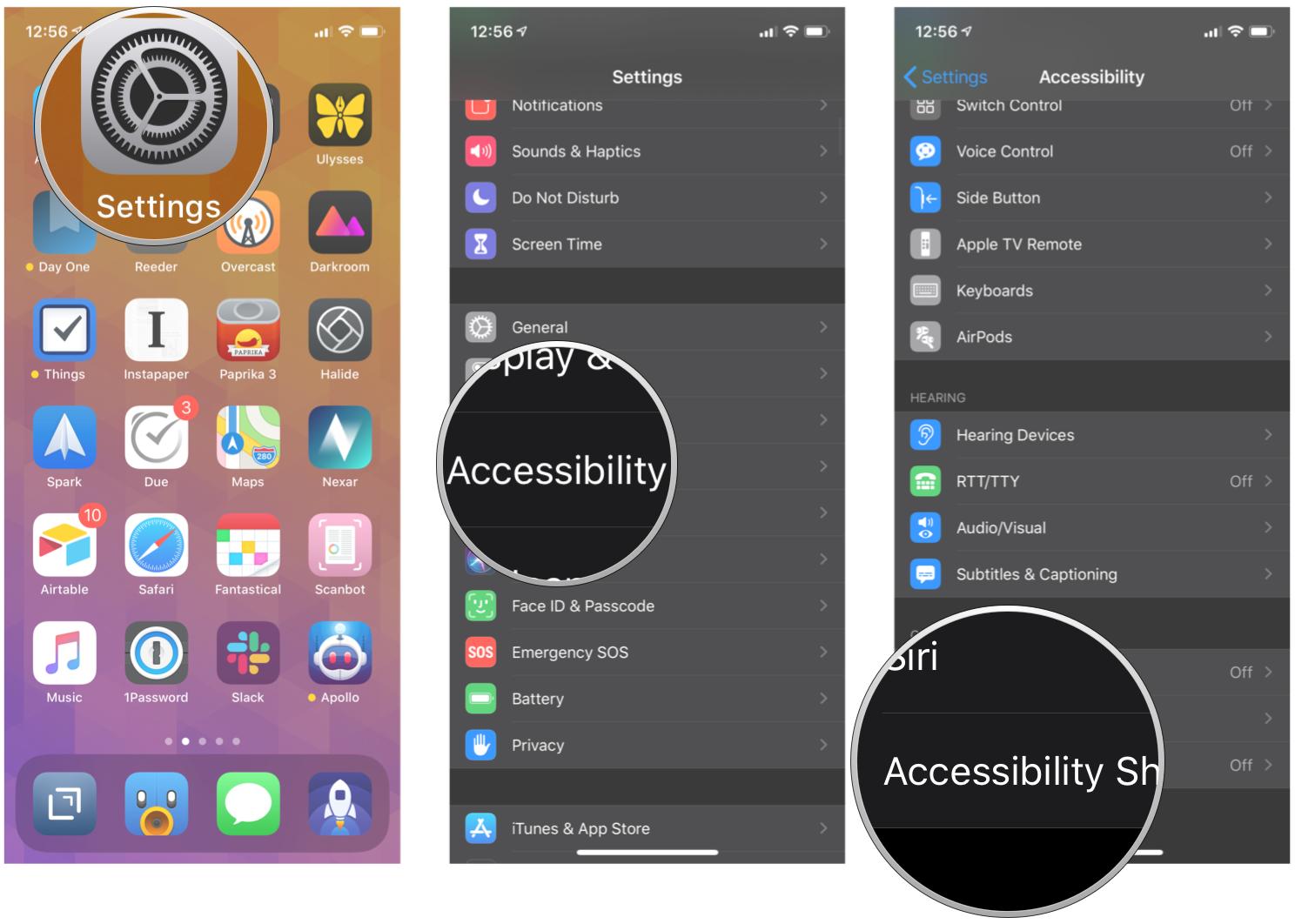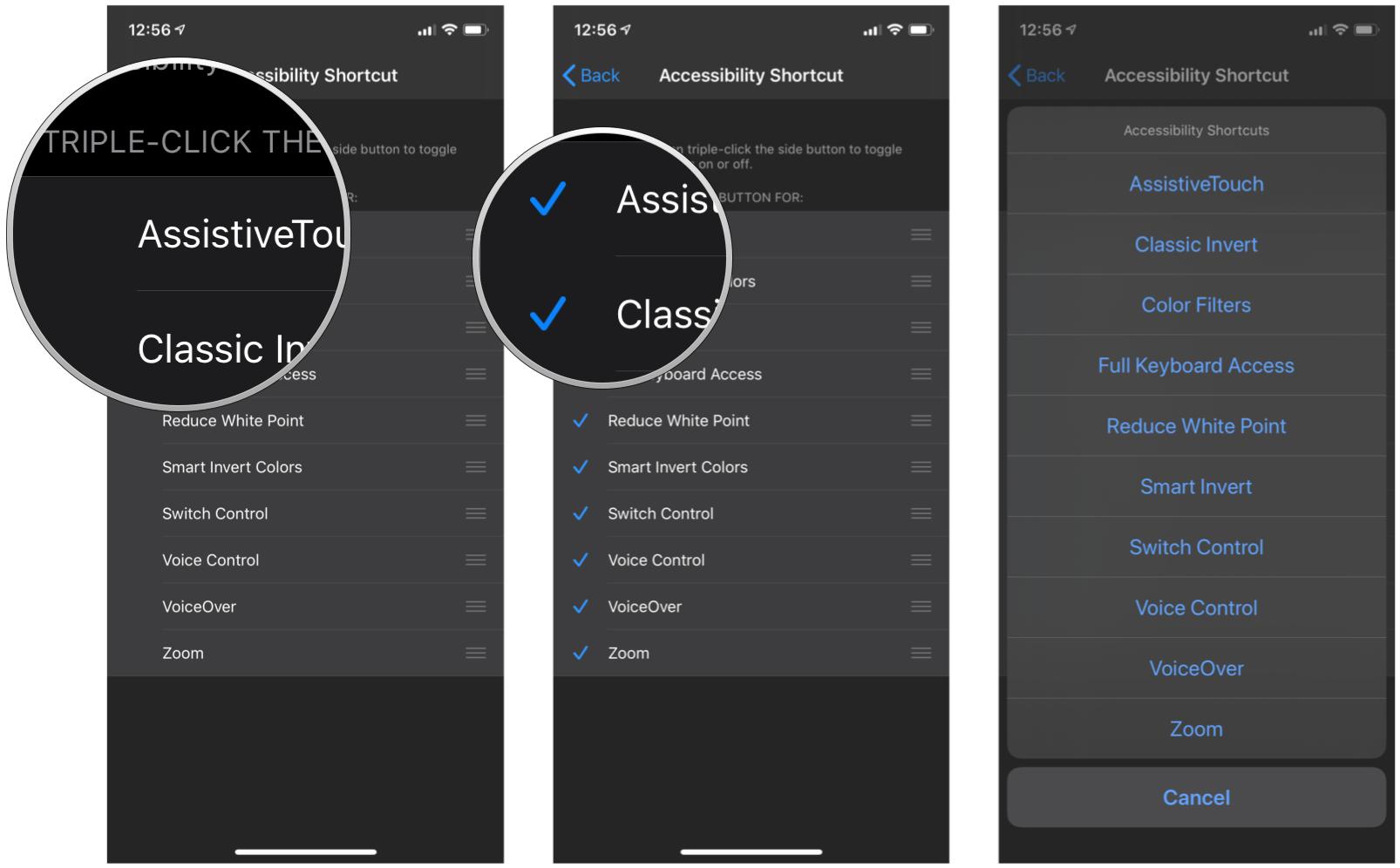How To Turn Off Accessibility Button On Iphone
When it comes to accessibility, Apple pretty much does it best. Whether you aren't able to see, hear, or even touch, Apple has built-in accessibility options that make using the best iPhone or best iPad possible, even with disabilities. Or maybe you just need to make things easier to see or access just because. No matter what the case is, Apple's accessibility options make iOS 14 and iPadOS 14 welcome for everyone. But did you know that there is an Accessibility Shortcut on iPhone and iPad? This lets you triple press the Home button or Side button (on devices without a Home button) for quick access to your preferred Accessibility option.
Here's how to customize the Accessibility Shortcut on iPhone and iPad to make it work for you.
Accessibility Shortcut on iPhone:
- Accessibility Shortcut
- The Back Tap
How to enable and use the Accessibility Shortcut on iPhone and iPad
- Launch the Settings app on your iPhone or iPad.
- Tap on Accessibility.
-
Tap on Accessibility Shortcut — it's all the way at the bottom.
 Source: iMore
Source: iMore - Tap the action you'd like to perform when you triple-click the Home or Side button, so that a blue checkmark appears next to it. You can assign multiple functions to the shortcut.
- Triple-click your Home button (Touch ID devices) or Side button (Face ID devices) to perform the action you've assigned to the shortcut.
-
If you assigned multiple options, just choose the action that you want to perform from the menu.
 Source: iMore
Source: iMore - If you want to reorder the options, just drag-and-drop using the handle on the right side for each option.
Here's a brief description of the options you have and what they are:
- AssistiveTouch: Adds the ability to access many common hardware buttons and gesture controls with single taps—a useful feature for those with motor impairments.
- Classic Invert Colors: A great option for anyone with a visual impairment such as color blindness. All colors across iOS will be inverted.
- Color Filters: Changes the color layout of the screen for those with color blindness.
- Full Keyboard Access: Allows you to navigate iOS interface without using touch input. A physical keyboard is required to use this feature.
- Magnifier: Triggers a camera style viewfinder with sharp zoom controls so you can see small text. You will need to have Magnifier enabled to have this option available.
- Reduce White Point: Reduces the intensity of bright colors for those with sensitivities or color blindness.
- Smart Invert Colors: Same as Classic Invert Colors, except it doesn't change photos, media, and some apps.
- Switch Control: Lets you use external switches, or the screen itself, as a switch for motor accessibility.
- Voice Control: Lets you speak commands to your iPhone or iPad. For a full list of everything that you can do with Voice Control, check out our comprehensive Voice Control guide.
- VoiceOver: Allows your iPhone or iPad to speak to you when enabled. Commonly used by folks with visual impairments.
- Zoom: Allows you to zoom the Home screen and all other content for better visibility. You can then use two and three-finger gestures to tap and pan around.
- Guided Access: When you're in an app, it keeps the iPhone in a single app and allows you to control which features are available. You need to have the Guided Access feature enabled before it is available as an Accessibility Shortcut option.
- People Detection: This is a new Accessibility feature introduced in iOS 14.2 for iPhone 12 Pro users. It uses Machine Learning with the LiDAR scanner to determine if an object in the camera is a person or not a person. You'll receive audio feedback to help you determine how far away or close a person is to you.
Once you've made your selection for the Accessibility Shortcut on iPhone and iPad, you can simply triple-click the Home button or the Side button on iPhones and iPads with Face ID from anywhere, not just from Settings, and your iPhone or iPad will enable the function you've selected. To disable it, just triple-click the button again. If you have multiple functions assigned, just tap the option you want to use.
The Back Tap shortcut in iOS 14
One of the new additions in iOS 14 is the Back Tap gesture. With the Back Tap, you're able to double tap or even triple tap the back of your iPhone for quicker access to some commonly-used actions, such as accessing the Notification Center or Control Center. You can also use the Back Tap gesture to launch Shortcuts that you've created, opening up a whole new world of possibilities.
How to make a shortcut for the Back Tap iOS 14 accessibility feature
Questions?
Questions about the Accessibility Shortcut on iPhone and iPad? Sound off in the comments below!
January 2021: Updated for iOS 14 with People Detection feature.
How To Turn Off Accessibility Button On Iphone
Source: https://www.imore.com/how-use-and-customize-accessibility-shortcut-iphone-and-ipad
Posted by: selfancel1979.blogspot.com



0 Response to "How To Turn Off Accessibility Button On Iphone"
Post a Comment